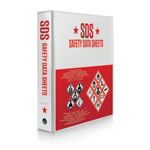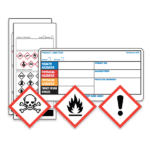
Safety Data Sheets and the International Agency for Research on Cancer Mission Briefing
Most people are familiar with Safety Data Sheets. They can be found in laboratories and even in office buildings. But you wonder if anyone realizes how much research is behind creating such a document. One organization known as the International Agency for Research on Cancer (IARC), is one such organization that contributes to a Safety Data Sheet (SDS). IARC is a branch of the World Health Organization focused on cancer research. Their mission is to coordinate and conduct research on the causes of cancer and the mechanisms of carcinogenesis. This includes evaluating the carcinogenic risks of agents, chemicals, and environmental factors. IARC’s research even plays a role in which they have been able to ban such substances as asbestos, and benzene.
How Safety Data Sheets Use IARC
The evaluations by IARC are important because they provide critical information for agencies developing SDSs and regulations to protect public health. The classification of a chemical as a known or probable carcinogen can lead to restrictions regarding safe handling practices and protective measures. The Globally Harmonized System of Classification and Labelling of Chemicals (GHS) also uses a system in which it breaks down the probability of a chemical or substance ranging from something that is not carcinogenic to something that may be carcinogenic to something that is suspected of being carcinogenic. Through research we can compare the 2 systems to come up with a classification on a Safety Data Sheet. In other words, the research from IARC can be interpolated into a GHS classification.

This information can also be referenced in the SDS, mainly in section 11 where it states if a chemical has been evaluated by IARC.
Protecting Public Health
By identifying carcinogenic hazards, IARC helps countries take action to prevent cancer and improve public health. Their evaluations have led to many effective measures such as eliminating hazardous exposures, implementing workplace safety measures, requiring warning labels, and banning dangerous pesticides or additives. The work of IARC continues to shape policies and actions around the world that aim to reduce the cancer burden and make the environment we all share safer and healthier.
Conclusion
Even though it might seem that classifications on a SDS may look overly cautious. We can say that a proper scientific approach was conducted to come up with the evaluations for chemicals and substances. In the end, this research can be used on a Safety Data Sheet which gives workers another tool of awareness of how to handle chemicals and other products in the workplace to protect themselves, especially from cancer.
ICC Compliance Center has a team of full-time Regulatory Experts who have years of experience and are certified/recognized in their field of expertise. Ask us your tough questions by calling 888.442.9628 (USA) or 888.977.4834 (Canada) or send us an email.
Stay up to date and sign up for our newsletter!
We have all the products, services and training you need to ensure your staff is properly trained and informed.
 Safety Data Sheet Safety Data Sheet(SDS) Services |
 GHS/OSHA/WHMIS GHS/OSHA/WHMISLabels |
 OSHA/WHMIS/GHS OSHA/WHMIS/GHSTraining Courses |





